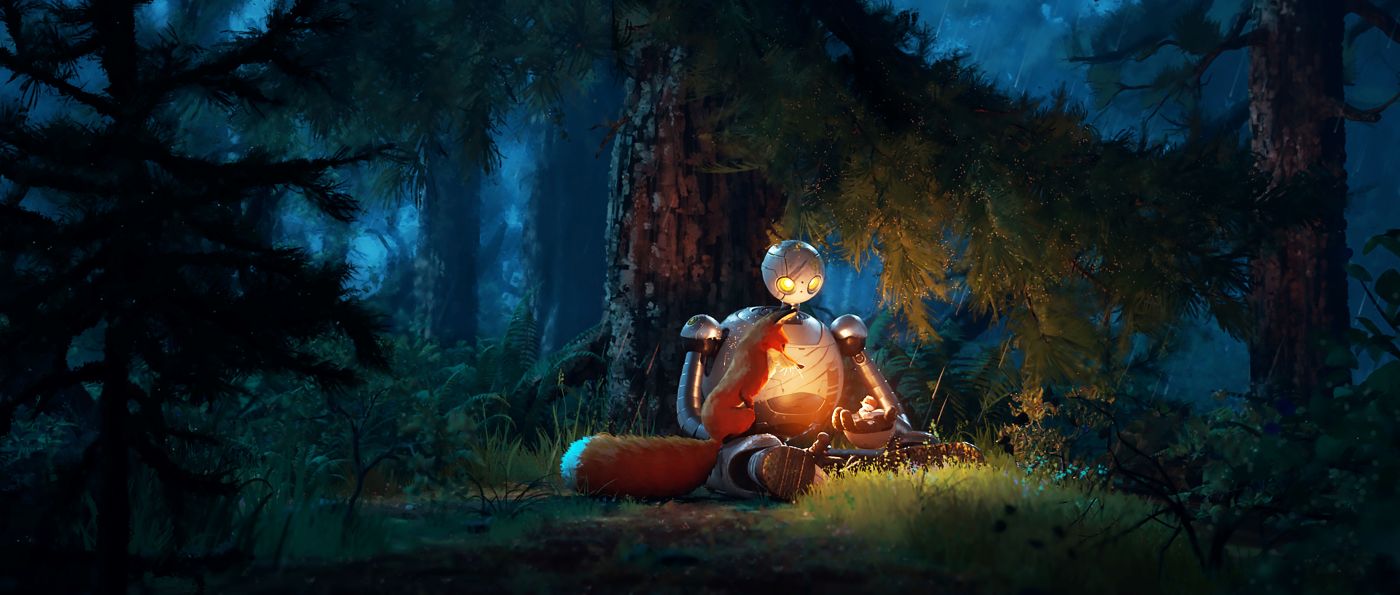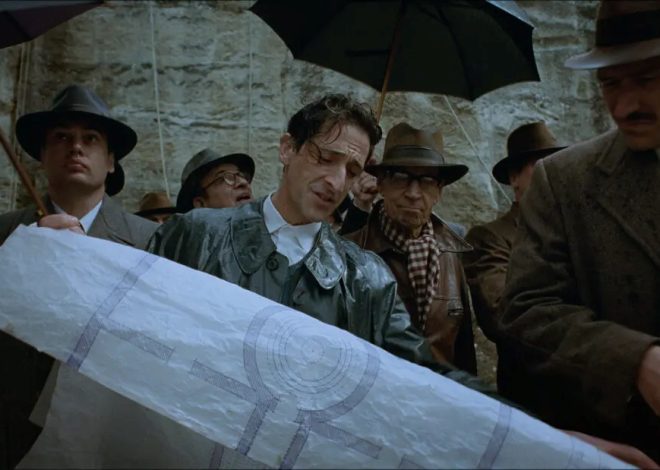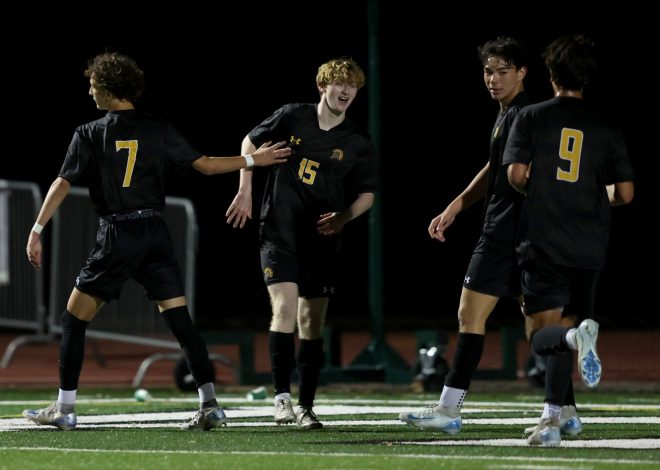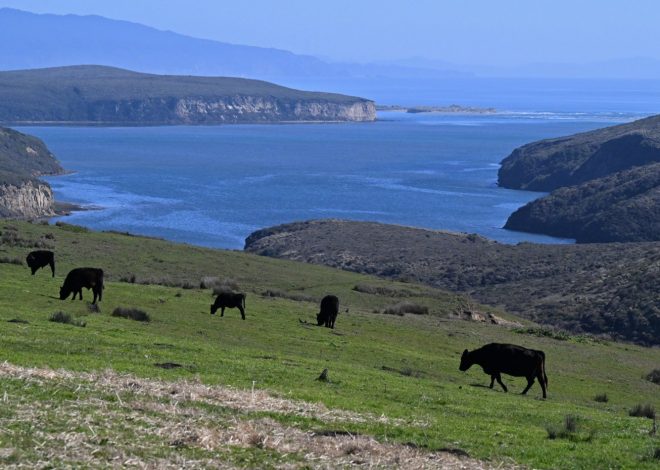
‘Wild Robot’ creators took story forward by looking back
Out with the new and in with the old … sort of.
That sums up the retro-yet-original visual approach director and screenwriter Chris Sanders and DreamWorks animators traveled when creating the achingly beautiful “The Wild Robot,” a family-friendly masterwork about a people-pleasing robot bonding with an orphaned gosling in the woodlands of an uninhabited (by humans at least) island.
The computer-generated animated feature often takes on the qualities of an Impressionistic painting — in stark contrast to the photorealism style of today.
“The best art you have a visceral reaction to,” said producer Jeffrey Hermann. “You go into an art museum and you’re taken in by the range of expression of those pieces of work.” And during the early stages of creating the look of the film, he said, “Chris kept gravitating towards the paintings that were more impressionistically done and asked can we actually do that? And everybody wanted to try.”
Already tagged a classic by critics after its world premiere at the Toronto International Film Festival, the family-friendly feature lands in theaters Sept. 27. It celebrates the look of hand-drawn animation in a galvanizing, ready-for-a-change sort of way, taking moviegoers back to a classic painterly visual style that once dominated the animation landscape, mostly in the house that Walt built.
The classic approach got the boot shortly after Pixar’s “Toy Story” arrived in 1995 and opened the floodgates for 3-D computer-generated animation to become all the rage.
Sanders and DreamWorks animators strove to conjure some old-school magic from the start looking at what they were doing as if it were on an artist’s canvas. It seemed like a natural fit for the source material — the first book in an enormously popular trilogy by Peter Brown.
“I didn’t want this to feel young given the subject matter of a robot and animals,” Sanders said during a press tour for the film he attended with Hermann.
“I was worried that if this was in what we would call the traditional computer-generated look we’ve been locked into for a long time technologically, that it would just feel too young, and this film, this story, is for adults as well,” Sanders said. “So getting it into that level of sophistication was critical, and we were at the perfect place at the perfect time because DreamWorks had made some huge advances visually with ‘Puss in Boots: The Last Wish’ and ‘The Bad Guys’ with getting an illustrated look up onscreen.”
Sanders, who co-directed other animated favorites including “How to Train Your Dragon” and “Lilo & Stitch,” was seeking to take the idea even further.
“We were leveraging off those advancements and pushed even further to get this really soft, lovely painterly look,” he said, adding that we’ve “reconnected with all the stuff we loved when they made ‘Bambi.’”
That painterly style “evokes reality” more effectively to Sanders. He singles out one gorgeous sequence when Roz is walking on a log with a waterfall behind her. “That (scene) feels more real to me than anything I’ve seen for a very, very long time in an animated realm,” he said.
“The Wild Robot” is bound to make you tear up and also aims to illustrate how technology and nature can coexist as it tells the story of a strictly programmed robot Roz (voice of Lupita Nyong’o ) that crash-lands on an unspoiled island and accidentally kills a gosling’s parents. She teams with a crafty fox (voice of Pedro Pascal) to co-parent the orphaned gosling who grows into a barnacle goose named Brightbill (voice of Kit Connor).
It took 3½ years to make “The Wild Robot,” including getting the right people attached to it, including Nyong’o and Pascal (who reportedly claimed the fox character was closer to who he is as a person than any other role he has played) as well as Oscar-winner Kris Bowers, who composed the rich score that reflects the mood and sweep of every scene.
Nyong’o carved out a good deal of time talking to Sanders about her performance and creating minute vocal changes given she’s playing a sentient. He was blown away by her dedication and her vision of the character.
“It is subtle and incredibly complex,” he says about her performance. “It was fascinating for me to work with Lupita and to watch her process in deconstructing Roz, to try to understand exactly how she is thinking. Roz has programmed thinking so understanding the architecture of her reasoning was key, I think, for Lupita to begin to shape her performance and she really did shape it.”
Given all the care and craftsmanship involved, there’s really only one way to experience “The Wild Robot” — seated in a movie theater.
“Never before have I worked on a film where I do want to urge people if they have the opportunity to definitely see it in the theater,” Sanders said. “Because people will see something they’ve never seen before. I think people in the future will be able to say ‘Oh I saw this in a theater when it first came out’ because the visuals are mind-blowing. And again they’ve never seen anything like this.”
Some of the toughest critics who have seen it – young fans of the book – have given the film their thumb’s up, and are already demanding more.
“To our relief, a lot of the kids we’re hearing from are very excited about the film,” Hermann said. “So much so that one of their first questions is are we going to go ahead and adapt the rest of the books.”
So…
“We would love to is our answer to that,” he adds. “We’ll see how everything plays out in the coming weeks and months ahead. But both Chris and I are very attached to the story and these characters in this world and if you’ve read the books you know where the story goes and you understand the importance of continuing the story beyond what we’re telling in the first film.”
Contact Randy Myers at [email protected].


